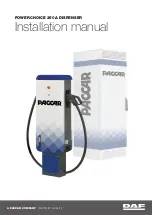
Seat belts
159
Using the system
Safety
Driving Tips
General Maintenance
Breakdown assistance
Technical Data
The physical principle of a frontal collision
The physical principle of a frontal accident can be explained quite simply:
Motion energy, so-called kinetic energy, is produced as soon as the vehicle is
moving, both for the vehicle and its occupants. The magnitude of this kinetic energy
depends essentially on the speed at which the vehicle is travelling and on the
weight of the vehicle and the occupants. The greater the speed and weight increase,
the greater the amount of energy which has to be absorbed in the event of an acci-
dent.
The speed of the vehicle is, nevertheless, the most important factor. Doubling the
speed of the vehicle from 25 km/h up to 50 km/hour increases the kinetic energy
four times.
The common opinion that it is possible to support your body in a minor accident
with your hands, is incorrect. Even in a collision at only a low speed, the forces
acting on the body are such that it is no longer possible to support your body.
Even if you only drive at a speed within the range from 30 km/hour to 50 km/hour,
the forces which are produced on your body in the event of an accident can easily
exceed 10.000 N (Newton). This equals a weight of one tonne (1 000 kg).
In the event of a frontal collision, occupants of the car not wearing a seat belt, are
thrown forward and strike in an uncontrolled way parts of the interior of the car,
such as steering wheel, dash panel, windscreen,
⇒
fig. 158
. The occupants of a
vehicle who have not fastened their seat belts may even be thrown out of the
vehicle. This can result in fatal injuries.
It is also important that rear seat occupants fasten their seat belts as they will other-
wise be thrown through the vehicle in an uncontrolled manner in the event of an
accident A rear seat passenger who has not fastened the seat belt is a danger not
only to himself but also for those seated at the front
⇒
fig. 159
.
Important safety information regarding the use of
seat belts
The correct use of the seat belts considerably reduces the risk of
injury!
WARNING
•
The belt webbing must not be jammed in-between at any point or
twisted, or chafe against any sharp edges.
•
It is important that the belt webbing is properly routed if the seat belts
are to offer their maximum protection
⇒
page 160, “How are seat belts
correctly fastened?”.
Fig. 158 The driver is
thrown forward if not
wearing a belt
Fig. 159 The rear seat
occupant is thrown
forward if not wearing a
belt
NKO A5 20 MR08.book Page 159 Wednesday, April 11, 2007 2:54 PM
Содержание Octavia 2007
Страница 1: ...SIMPLY CLEVER kodaOctavia OWNER S MANUAL 29 3 2007 13 44 07 29 3 2007 13 44 07...
Страница 6: ...Contents 5 NKO A5 20 MR08 book Page 5 Wednesday April 11 2007 2 54 PM...
Страница 153: ...Communication 152 NKO A5 20 MR08 book Page 152 Wednesday April 11 2007 2 54 PM...
Страница 231: ...Accessories changes and replacement of parts 230 NKO A5 20 MR08 book Page 230 Wednesday April 11 2007 2 54 PM...
Страница 279: ...Technical Data 278 NKO A5 20 MR08 book Page 278 Wednesday April 11 2007 2 54 PM...
Страница 287: ...SIMPLY CLEVER kodaService kodaGenuine Parts kodaGenuine Accessories 29 3 2007 13 44 51 29 3 2007 13 44 51...
















































